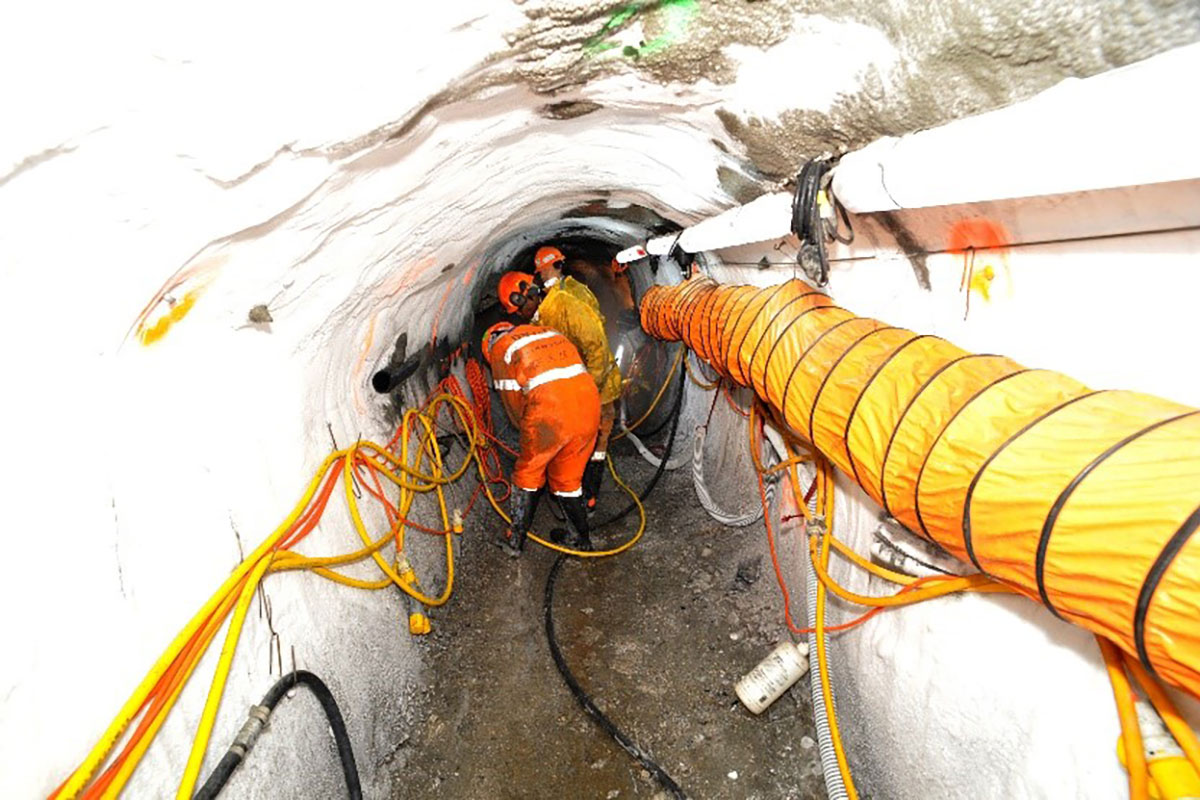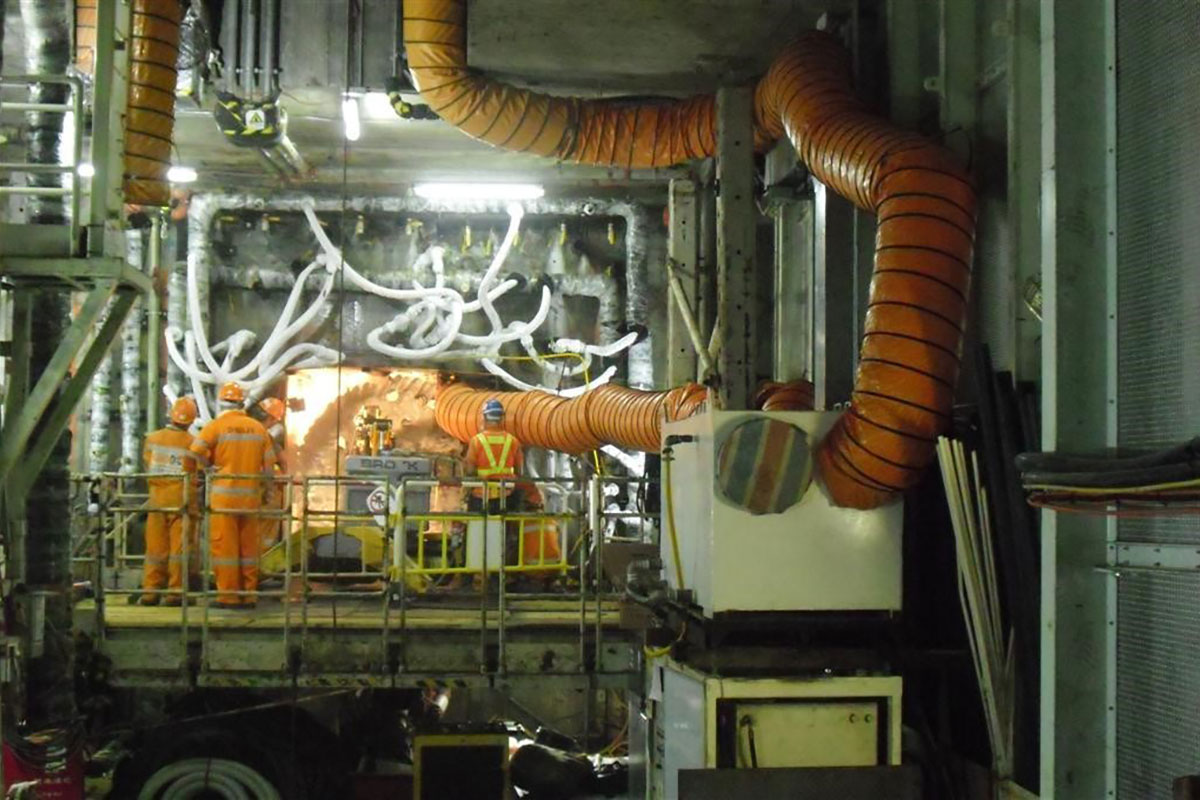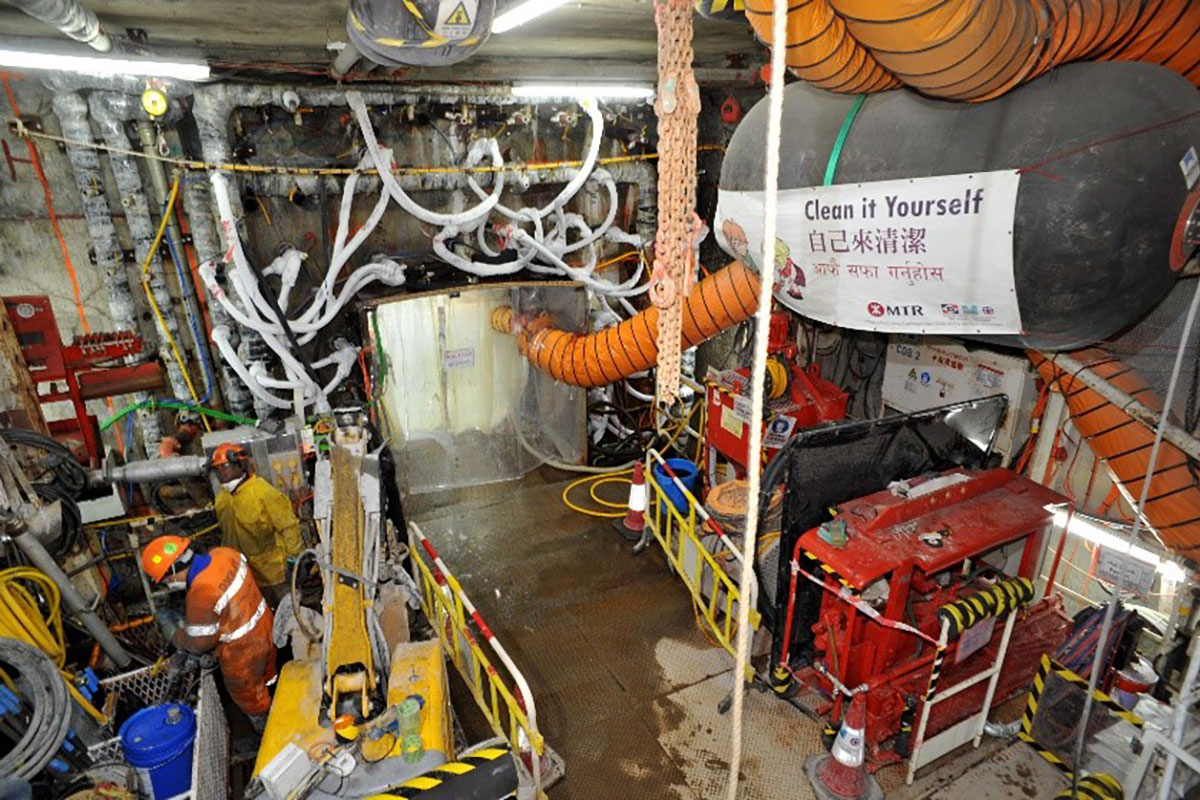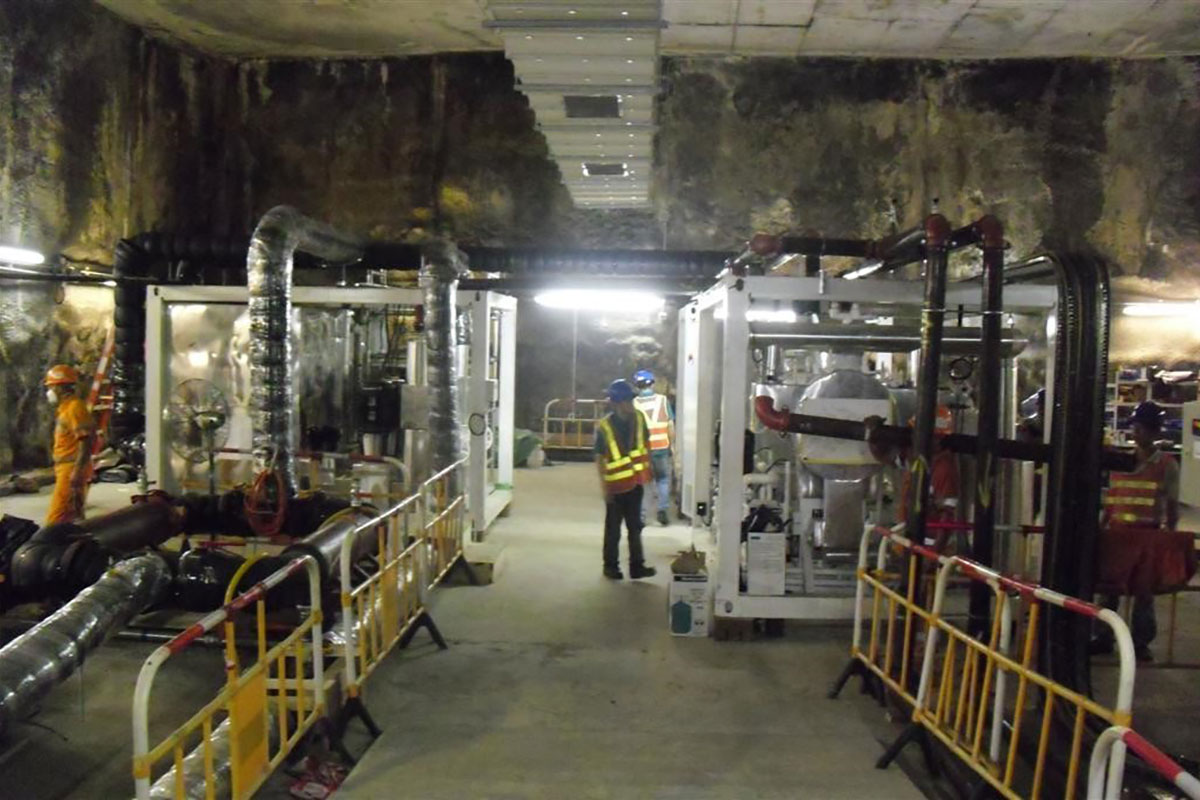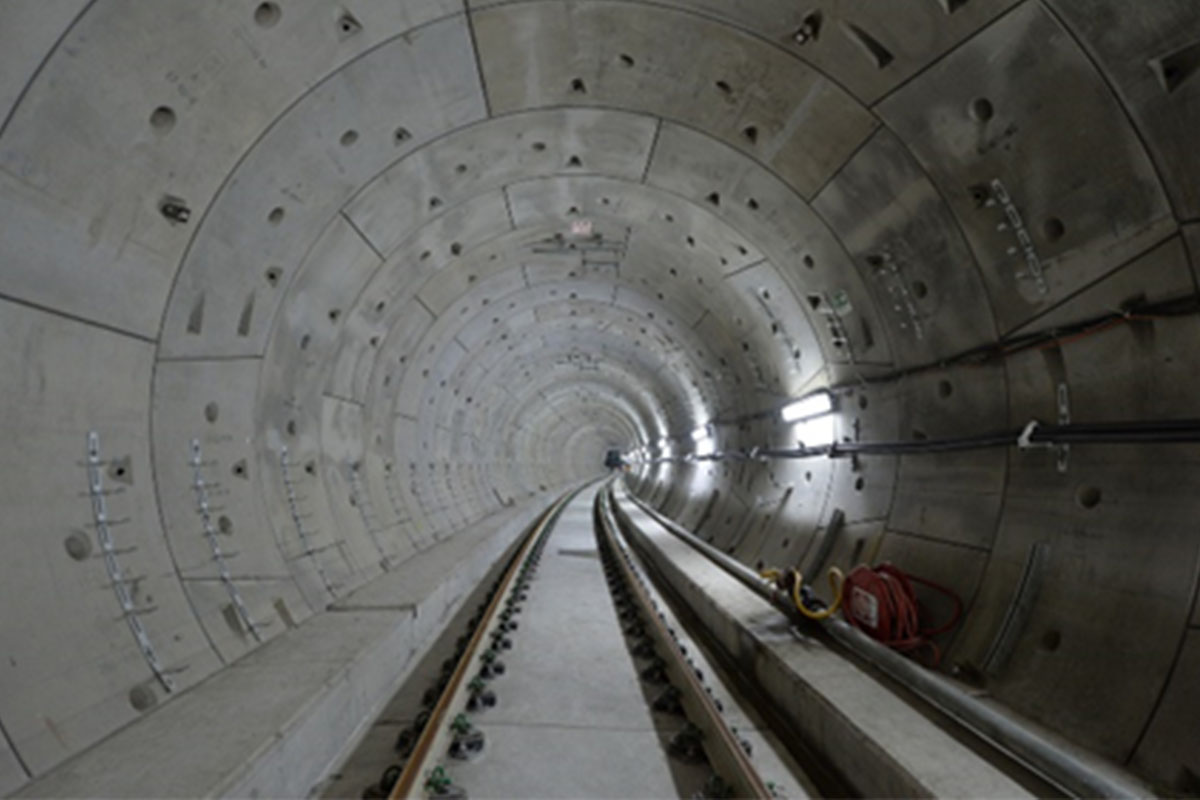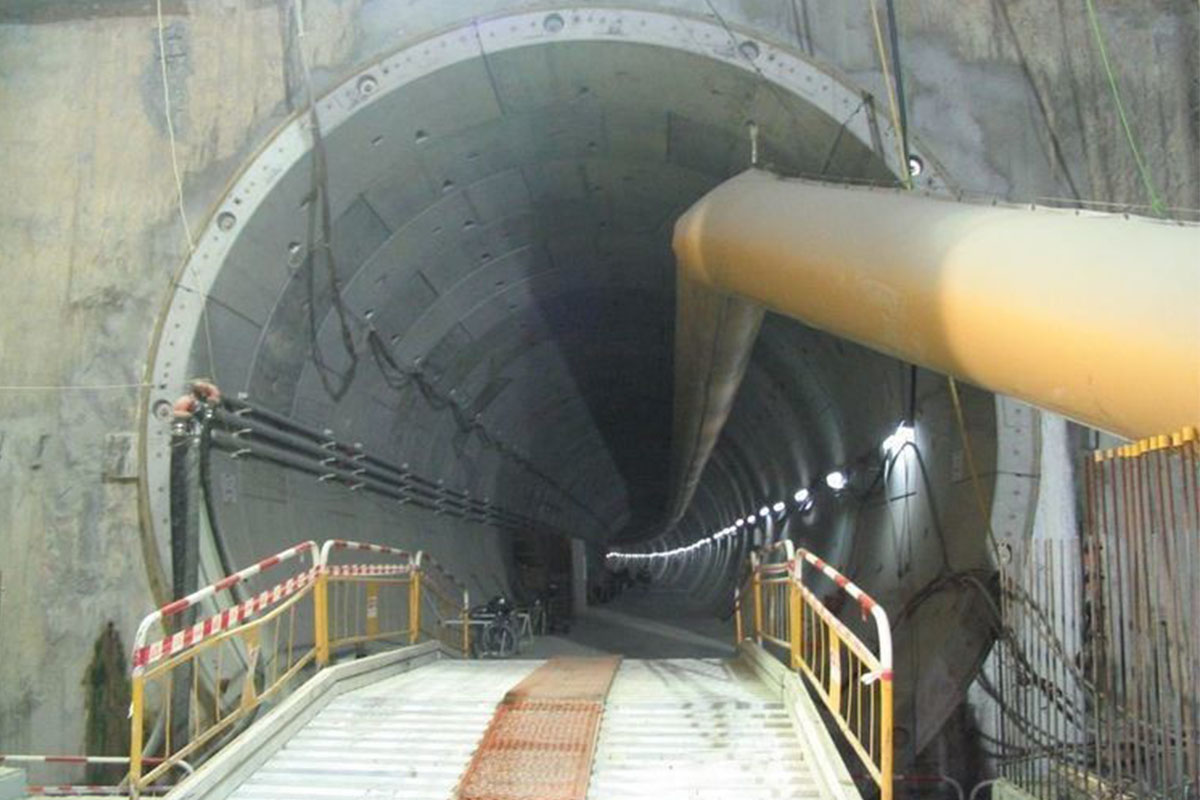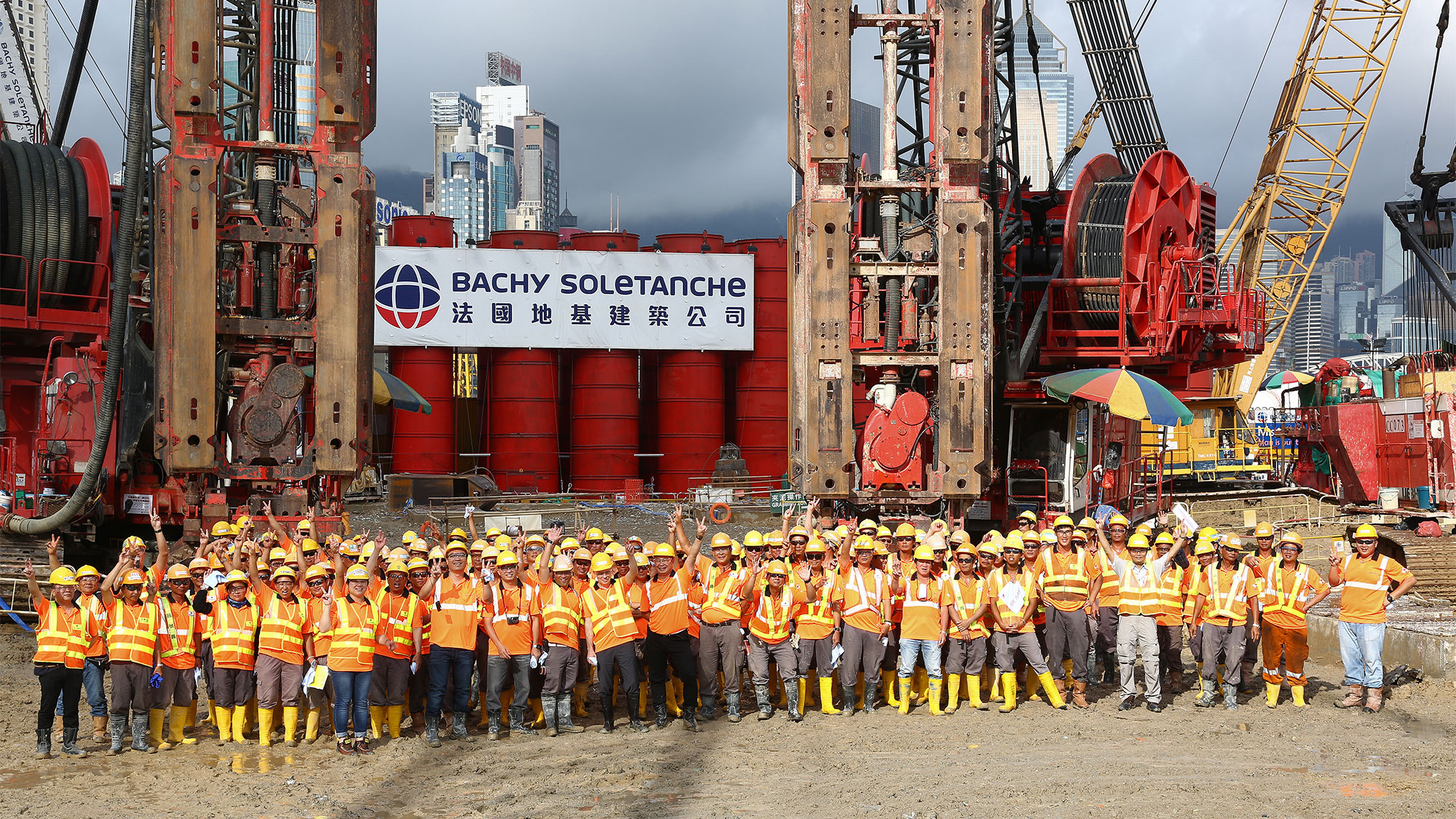Introduction
Ground freezing works on the principle of freezing the water in the soil pores, thus rendering the soil impermeable and of greater strength. This technique is particularly suitable for the reinforcement of impervious soil or mixed ground in which grouting is inefficient or uncertain.
|
The soil is frozen by the transfer of calories from the ground to a low-temperature fluid through a probe, the water freezes and forms a sheath of frozen soil around the probe. The sheath gradually expands and can be used to build strong, impermeable barriers. The most common uses of ground freezing are for mine shafts, cross passages between tunnels, safety niches and excavation beneath sensitive structures. The main distinguishing features of the freezing process as compared to other ground support or treatment techniques are as follows:
|
Highlights
Ground freezing is environmental friendly technique offers environmental benefits below:
- No permanent modification of the natural hydrology,
- No chemicals injected into the ground.
Bachy Soletanche pioneered ground freezing in Hong Kong in 2002 when it applied the technique to provide temporary support for the construction of cross passages on the KCRC “Lok Ma Chau Spur Line”.
Bachy Soletanche has the ability to design and carry out ground freezing in various ground conditions and environments (from surface, from a tunnel…) using either brine or nitrogen technology.
Related Projects



